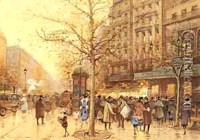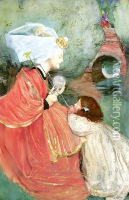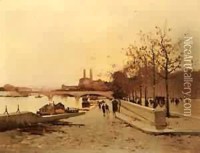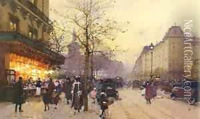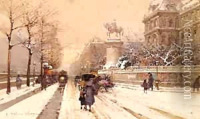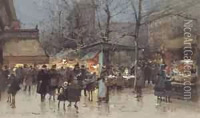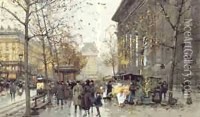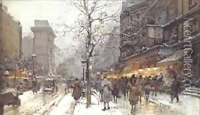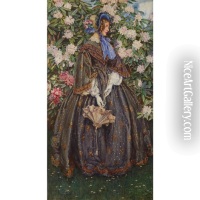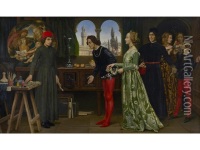Eleanor Fortescue-Brickdale Paintings
Eleanor Fortescue-Brickdale was an English painter known for her involvement in the later phase of the Pre-Raphaelite movement as well as for her contributions to early 20th-century illustration. Born in Upper Norwood, London, on February 25, 1872, she was one of the most prolific female artists of her time, and her work is characterized by its rich detail, vibrant colors, and often, themes of medieval chivalry and romantic literature.
Fortescue-Brickdale trained at the Crystal Palace School of Art under Herbert Bone and later at the Royal Academy Schools, where she began to develop her unique style. Despite the male-dominated art scene of her time, she gained significant recognition and was among the few women who were full members of the Royal Institute of Painters in Water Colours.
Early in her career, Fortescue-Brickdale was influenced by John Ruskin and the earlier Pre-Raphaelites, particularly their attention to nature and their incorporation of literary and religious themes. She often depicted scenes from Shakespeare, Tennyson, and Dante, infusing them with a sense of idealism and moral gravity. Her painting 'The Deeds of Sir Galahad' (c. 1900), for example, showcases her ability to blend Pre-Raphaelite attention to detail with her own unique sense of color and composition.
In addition to her painting, Fortescue-Brickdale was a skilled illustrator, contributing to luxurious editions of books such as Alfred Tennyson's 'Idylls of the King' and 'Poems' by Robert Browning. Her illustrations, much like her paintings, are known for their vivid detail and imaginative landscapes.
During World War I, her work took on a more somber tone, reflecting the impact of the conflict on British society. After the war, she continued to paint and exhibit, though the advent of modernism and changing tastes led to a decline in her popularity.
Eleanor Fortescue-Brickdale lived through a period of significant change in the art world, from the height of the Pre-Raphaelite movement to the rise of modernism. Despite the shifts in artistic trends, she remained dedicated to her detailed, romantic style throughout her career. She died on March 10, 1945, in London, leaving behind a legacy of work that continues to be celebrated for its beauty, craftsmanship, and narrative depth.
